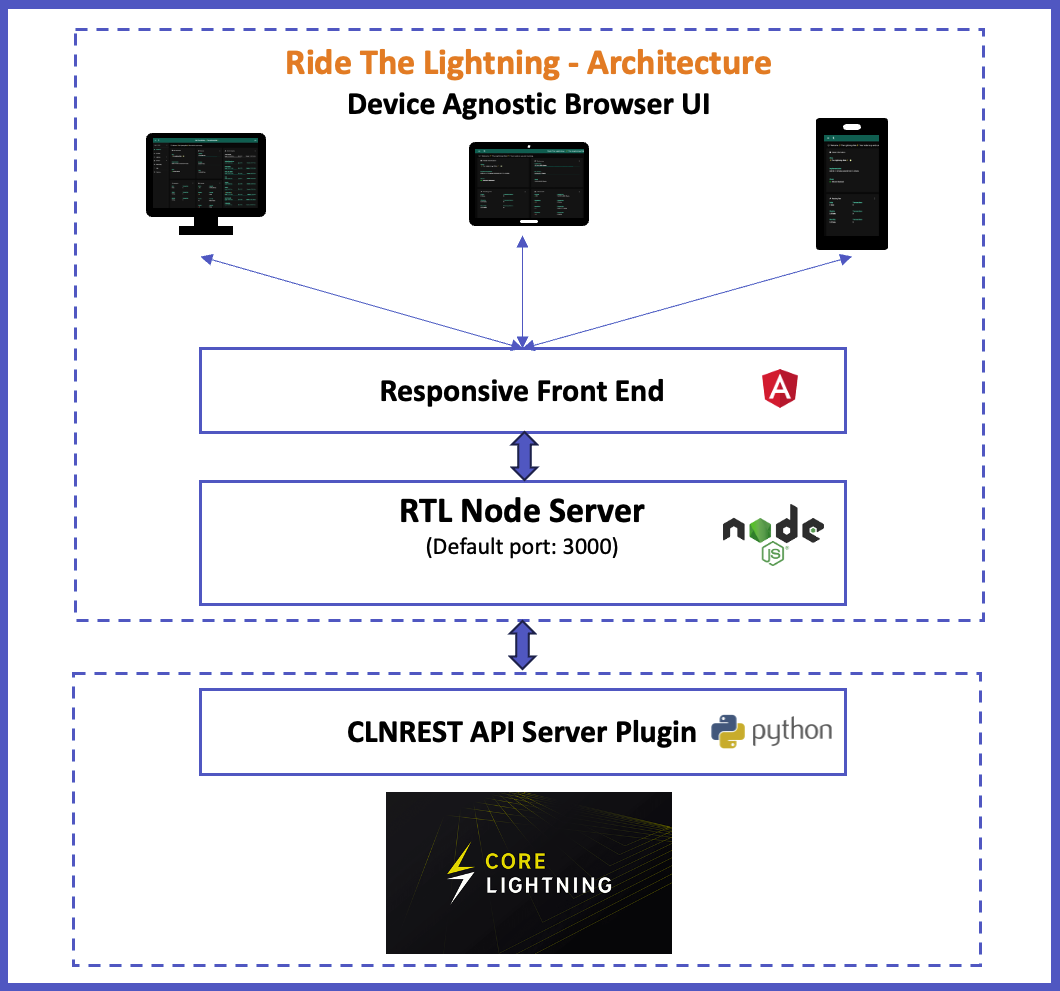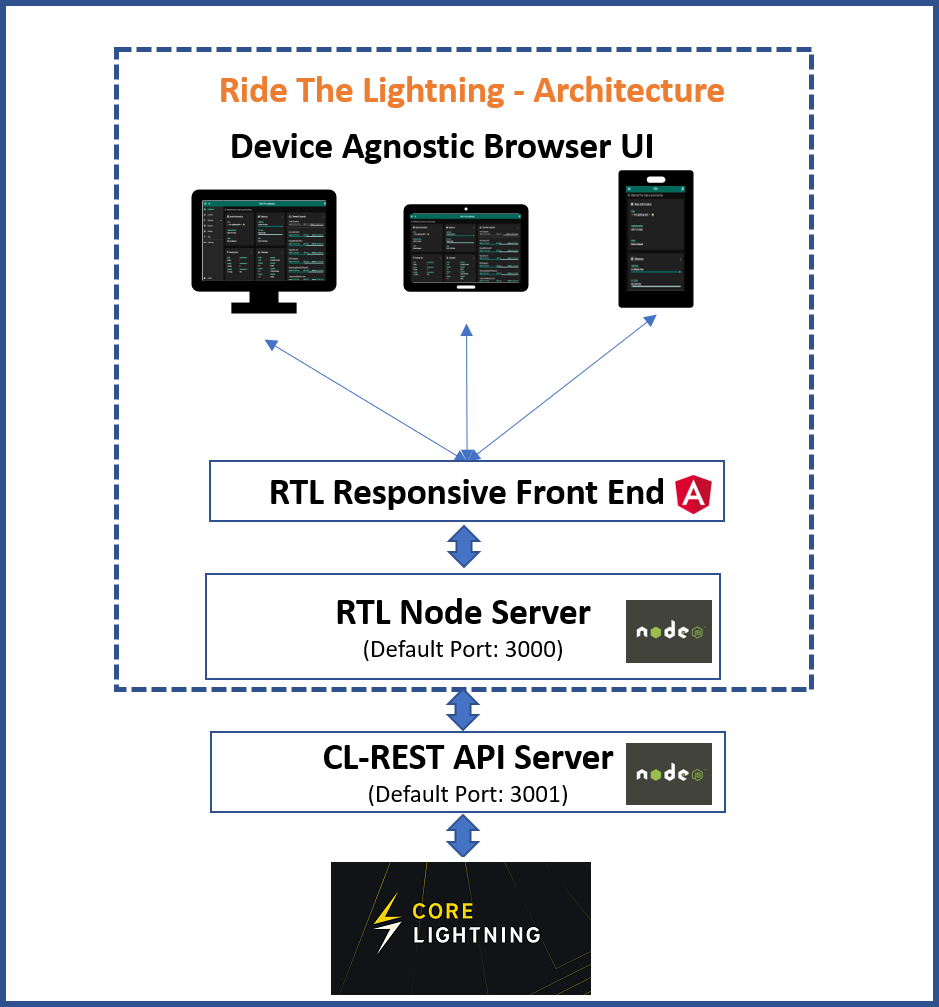4.3 KiB
RTL Core lightning setup
- Introduction
- Pre-requisite
- Architecture
- Installation
- Prep for execution
- Start the server and access the app
Introduction
RTL is now enabled to manage lightning nodes running Core Lightning
Follow the below steps to install and setup RTL to run on Core Lightning
Pre-requisites:
- Functioning Core Lightning node. Follow install instructions on their github
- NodeJS - Can be downloaded here
- CLNRest - Ensure that core lightning's
CLNRestAPI server is configured. Configuration instructions here - Create/reuse core-lightning's rune. Check
createruneandshowrunesdocumentation for more details on how to create runes - Copy the
runeand save it in a file which must be accessible to RTL. The content of the file must beLIGHTNING_RUNE="<your-rune>"
Architecture
Installation:
To download a specific RTL version follow the instructions on the release page
To download from master (not recommended):
First time setup
$ git clone https://github.com/Ride-The-Lightning/RTL.git
$ cd RTL
$ npm install --omit=dev
Or: Update existing build
$ cd RTL
$ git reset --hard HEAD
$ git clean -f -d
$ git pull
$ npm install --omit=dev
Error on npm install
If there is an error with upstream dependency conflict message then replace npm install --omit=dev with npm install --omit=dev --legacy-peer-deps.
Prep for Execution
RTL requires its own config file RTL-Config.json, to start the server and provide user authentication on the app
- Rename the file
Sample-RTL-Config.jsontoRTL-Config.jsonlocated at./RTL - Locate the complete path of the readable
.commandofile on your node - Modify the RTL conf file per the example file below
Ensure that the follow values are correct per your config:
lnImplementation- This should beCLN, indicating that RTL is connecting to a core lightning noderunePath- Path of the folder including filename which contains therunefor the node. The content of the file must beLIGHTNING_RUNE="<your-rune>"lnServerUrl- complete url with ip address and port of the CLNRest servermultiPass- Specify the password (in plain text) to access RTL. This password will be hashed and not stored as plain textconfigPath(optional) - File path of the core lightning config file, if RTL server is local to the core lightning server
{
"multiPass": <password required for accessing RTL>,
"port": "3000",
"defaultNodeIndex": 1,
"dbDirectoryPath": "<Complete path of the folder where rtl's database file should be saved>",
"SSO": {
"rtlSSO": 0,
"rtlCookiePath": "",
"logoutRedirectLink": ""
},
"nodes": [
{
"index": 1,
"lnNode": "Core Lightning Testnet # 1",
"lnImplementation": "CLN",
"Authentication": {
"runePath": "<Modify to include the path of the folder including filename which contains `rune`>",
"configPath": "<Optional - Config file path for core lightning>"
},
"Settings": {
"userPersona": "OPERATOR",
"themeMode": "DAY",
"themeColor": "PURPLE",
"bitcoindConfigPath": "",
"logLevel": "INFO",
"fiatConversion": false,
"unannouncedChannels": false,
"lnServerUrl": "https://<CLNRest api server ip address>:3001"
}
}
]
}
Start the server and access the app
Run the following command:
$ node rtl
If the server started successfully, you should get the below output on the console:
$ Server is up and running, please open the UI at http://localhost:3000 or your proxy configured url
Open your browser at the following address: http://localhost:3000 to access the RTL app
Detailed config and instructions
For detailed config and access options and other information, view the main readme page

